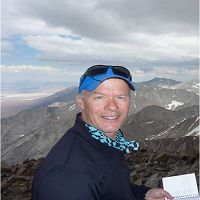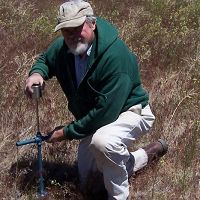Stacy et al., 2012
Lateral redistribution of dissolved vs. complexed organic matter with soil
Stacy, E.M., Medding, S.M., Hart, S.C., Hunsaker, C.T., Johnson, D.W., Berhe, A.A. (2012)
Fall meeting, American Geophysical Union, December 2012. Abstract B34C-07.
-
Sierra, INVESTIGATOR
-
Sierra, INVESTIGATOR
-
Sierra, INVESTIGATOR
-
Sierra, INVESTIGATOR
-
Sierra, STAFF
Abstract
Erosion can alter the principal mechanisms of organic matter storage and persistence. The influence of soil erosion on the global carbon (C) cycle is the result of three ecologically relevant factors: (1) changes in molecular composition of the organic matter (OM); (2) physical protection of OM within aggregates and pores; and (3) organomineral associations of OM with soil minerals through chelation and/or cation-bridging. Previous research has shown that prevalent OM stabilization mechanisms vary by landform position, where long-residence times of OM were associated with aggregation and cation-bridging in eroding positions, while OM in low-lying depositional areas was protected through burial and association with metal oxides. However, it is still unclear how OM stabilization mechanisms shift with extended transport from the source watershed. We addressed this issue by comparing soil from slope transects with sediment captured after it was transported from watersheds in the southern Sierra National Forest. Using a sequential extraction procedure, we separated organic particles (OP) and OM fractions that were water-extractable (free), aggregate-protected, or bonded to mineral surfaces through cation bridging to assess differences in stabilization mechanisms between landform positions and sediment. While the C:N ratio is consistent between years and watersheds, absolute C and N concentrations vary more in sediments than in the soils. Confirming previous work, there was little difference in free OP fraction between landform positions. However we found that this free OP fraction was often enriched in the sediment samples over the soils from the source watershed; the intensity of this signal differed by year. In addition, organomineral bonding also differed between sediments and soils. Of the five major polyvalent ions (Ca, Fe, Mg, Mn, and Al) that we measured in liquid extracts, calcium and iron were more closely correlated to C concentrations in sediments than in soils. Preliminary analysis of particle size distribution indicates that soil texture, particularly silt, is a controlling factor for C storage in complexed OM. Because these entisols and inceptisols have little clay, the potential for OM stabilization through these mechanisms is likely higher in other soils. Understanding which mechanisms of OM stabilization dominate before and after erosion will allow us to estimate the changing decomposition potential of this OM – including whether it results in a net carbon source, or a carbon sink, as seen in several other ecosystems.
Citation
Stacy, E.M., Medding, S.M., Hart, S.C., Hunsaker, C.T., Johnson, D.W., Berhe, A.A. (2012): Lateral redistribution of dissolved vs complexed organic matter with soil. Fall meeting, American Geophysical Union, December 2012. Abstract B34C-07..
Explore Further





